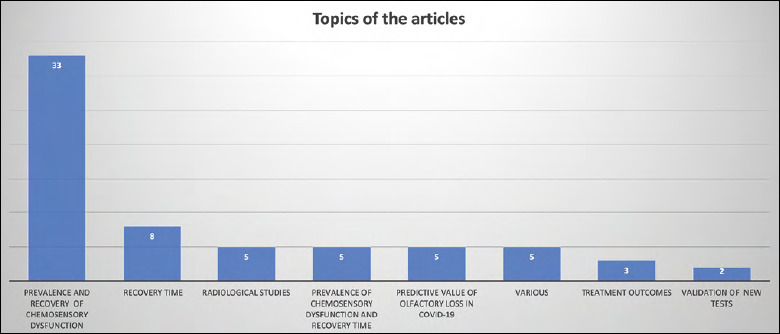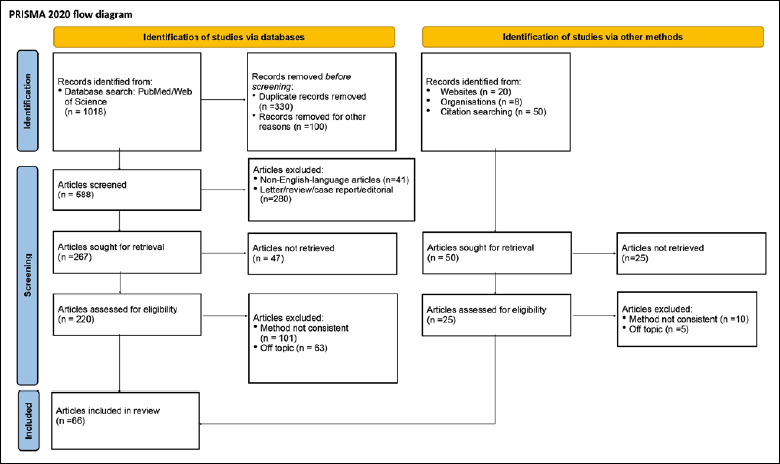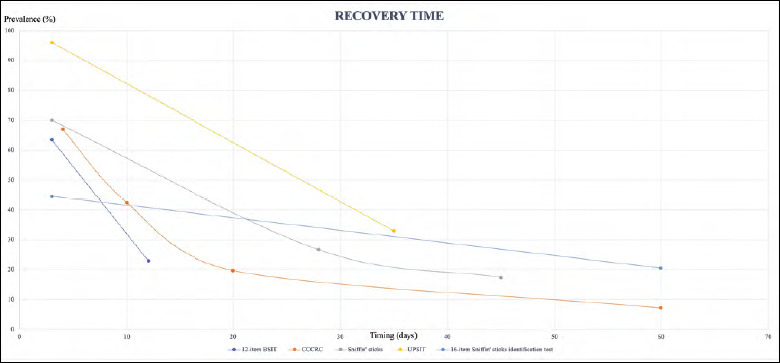Results from psychophysical tests of smell and taste during the course of SARS-CoV-2 infection: a review.
Acta otorhinolaryngologica Italica : organo ufficiale della Societa italiana di otorinolaringologia e chirurgia cervico-facciale
Pub Date : 2022-04-01
DOI:10.14639/0392-100X-suppl.1-42-2022-03
引用次数: 6
Abstract
SUMMARY Only a few studies have assessed smell and taste in Coronavirus Disease 2019 (COVID-19) patients with psychophysical tests, while the majority performed self-rating evaluations. Given the heterogeneity of the published literature, the aim of this review was to systematically analyse the articles on this topic with a focus on psychophysical testing. A search on PubMed and Web of Science from December 2019, to November 2021, with cross-references, was executed. The main eligibility criteria were English-language articles, investigating the clinical features of olfaction and gustation in COVID-19 patients using self-rating assessment, psychophysical testing and imaging techniques. A total of 638 articles were identified and 66 were included. Self-rating assessment was performed in 31 studies, while psychophysical testing in 30 and imaging techniques in 5. The prevalence of chemosensory dysfunction was the most investigated topic, followed by the recovery time. About the psychophysical assessment, the extended version of the Sniffin’ Sticks was used in 11 articles and the Connecticut Chemosensory Clinical Research Center test in another 11. The olfactory threshold performance was the most impacted compared to the discrimination and identification capacities in accordance with the hypothesis of a tropism of SARS-CoV-2 for the olfactory mucosa. The timing significantly influenced the results of the psychophysical testing with 20% of patients presenting olfactory dysfunction at one month after infection.



SARS-CoV-2感染过程中嗅觉和味觉心理物理测试结果综述
本文章由计算机程序翻译,如有差异,请以英文原文为准。
求助全文
约1分钟内获得全文
求助全文
来源期刊
自引率
0.00%
发文量
0

 求助内容:
求助内容: 应助结果提醒方式:
应助结果提醒方式:


